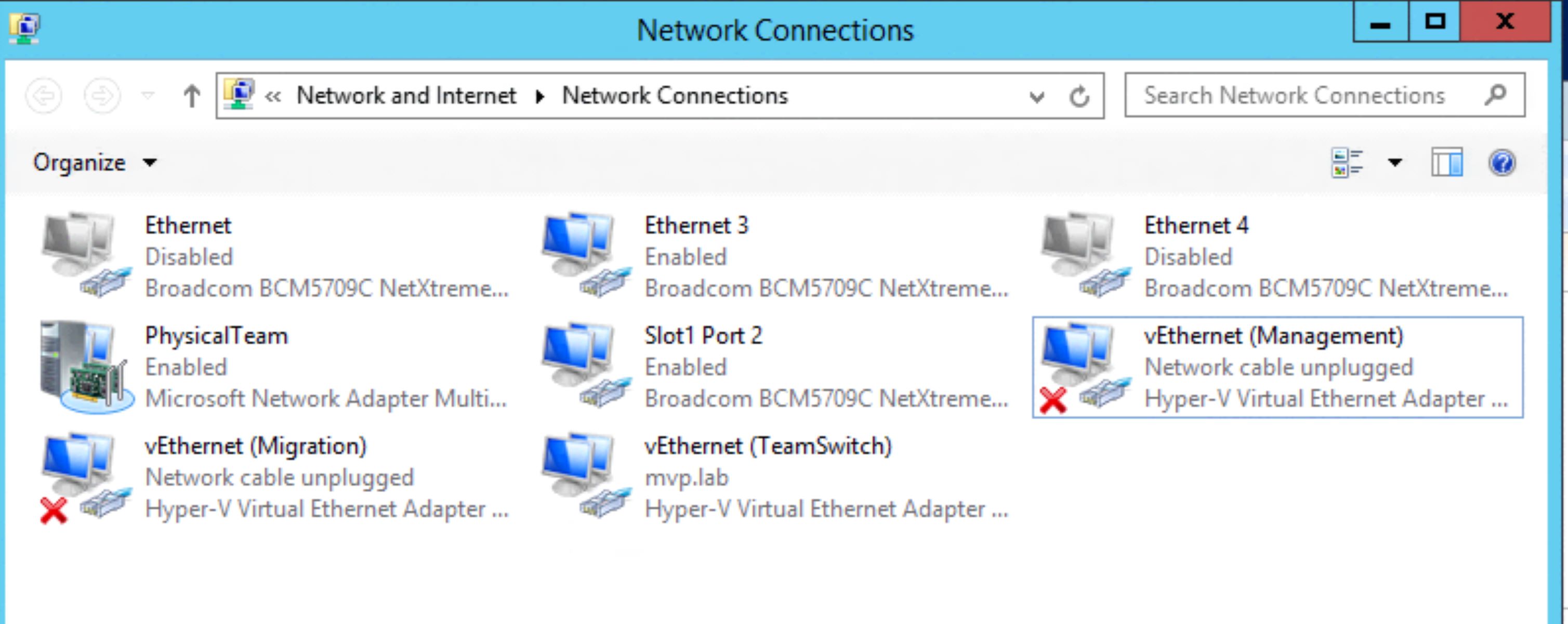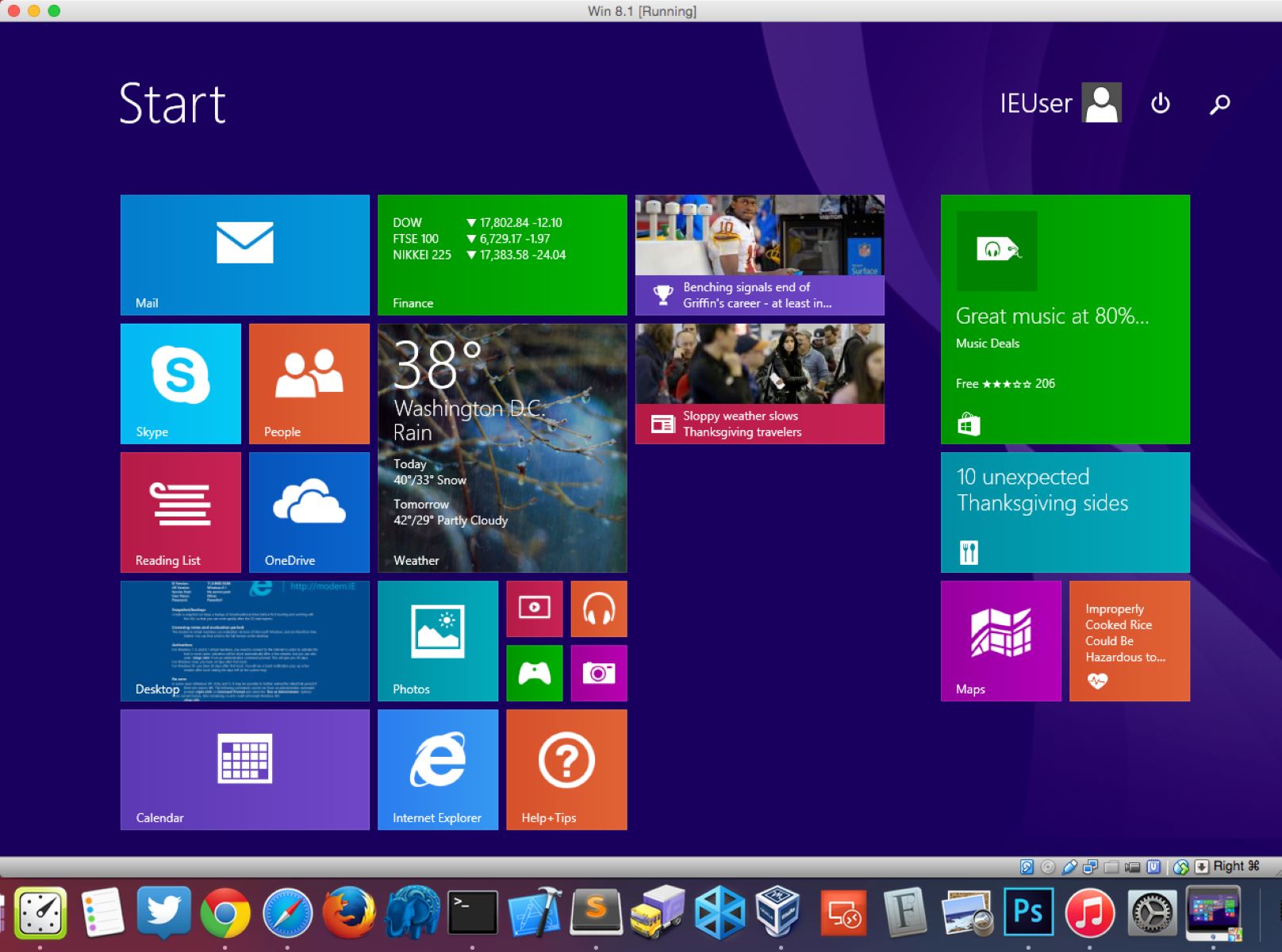Introduction
Setting up and configuring a network switch in Hyper-V is a fundamental aspect of managing virtualized environments. As businesses increasingly rely on virtualization to optimize resource utilization and streamline IT operations, the proper configuration of network switches in Hyper-V becomes paramount. This article will guide you through the process of configuring a network switch in Hyper-V, providing a comprehensive understanding of the underlying concepts and practical steps required for seamless implementation.
In the realm of virtualization, a network switch plays a pivotal role in facilitating communication between virtual machines (VMs) and the external network. By effectively configuring a network switch in Hyper-V, administrators can ensure efficient data transfer, network isolation, and enhanced security within the virtual environment. Understanding the nuances of network switch configuration is essential for optimizing network performance, enabling VM connectivity, and troubleshooting network-related issues.
This guide will delve into the intricacies of network switches in Hyper-V, offering insights into the configuration process, creation of virtual switches, adjustment of switch properties, and the seamless connection of VMs to the virtual switch. Additionally, troubleshooting common network switch issues will be explored to equip administrators with the necessary skills to address potential challenges effectively.
By comprehensively addressing the configuration of network switches in Hyper-V, this article aims to empower IT professionals and system administrators with the knowledge and expertise required to optimize network functionality within virtualized environments. Whether you are a seasoned IT professional or a novice administrator, the information presented here will serve as a valuable resource for mastering the configuration of network switches in Hyper-V. Let's embark on this journey to unravel the intricacies of network switch configuration and enhance the efficiency of your virtualized infrastructure.
Understanding Network Switches in Hyper-V
Before delving into the configuration process, it is imperative to grasp the fundamental role of network switches in Hyper-V environments. In the context of virtualization, a network switch operates as a virtual networking device that facilitates communication between virtual machines (VMs) and the external network. Essentially, it functions as a bridge, enabling data transfer and network connectivity within the virtual environment.
Within Hyper-V, network switches can be broadly categorized into external, internal, and private switches, each serving distinct networking purposes. An external switch allows VMs to communicate with external networks, enabling connectivity with other physical machines and network resources. On the other hand, internal switches facilitate communication solely between VMs and the Hyper-V host, creating a private network environment. Private switches, as the name suggests, provide isolated communication channels exclusively between VMs, without external network connectivity.
Understanding the types of network switches empowers administrators to configure virtualized networks according to specific requirements, whether it involves enabling external connectivity, establishing private networks for testing environments, or creating isolated communication channels for sensitive workloads.
Moreover, network switches in Hyper-V support advanced features such as VLAN tagging, Quality of Service (QoS), and network security protocols, allowing administrators to implement granular network configurations that align with organizational needs. VLAN tagging, for instance, enables the segmentation of network traffic, enhancing network security and optimizing bandwidth utilization within virtualized environments.
By comprehending the nuances of network switches in Hyper-V, administrators can make informed decisions regarding network architecture, performance optimization, and security implementation. This foundational understanding sets the stage for effectively configuring network switches, creating virtualized networks, and seamlessly integrating virtual machines into the network infrastructure.
Configuring a Network Switch in Hyper-V
Configuring a network switch in Hyper-V involves a series of essential steps to establish seamless communication between virtual machines (VMs) and external networks. The process encompasses creating virtual switches, adjusting switch properties, and connecting VMs to the virtual switch, culminating in a robust network infrastructure within the virtualized environment.
When configuring a network switch in Hyper-V, administrators have the flexibility to create external, internal, or private virtual switches, tailoring the network architecture to specific operational requirements. The creation of a new virtual switch involves selecting the appropriate switch type, naming the switch, and associating it with a physical network adapter to enable external connectivity or linking it to the Hyper-V host for internal or private networking.
Following the creation of a virtual switch, administrators can fine-tune switch properties to optimize network performance and security. Properties such as VLAN identification, bandwidth management, and network adapter associations allow for granular control over network configurations, ensuring efficient data transfer and network isolation within the virtual environment.
Connecting virtual machines to the virtual switch is a crucial step in the configuration process, enabling VMs to leverage the network connectivity provided by the virtual switch. By associating VM network adapters with the virtual switch, administrators facilitate seamless communication between VMs and external networks, internal network segments, or isolated private networks, depending on the type of virtual switch deployed.
Throughout the configuration process, it is essential to consider network requirements, security policies, and performance objectives to tailor the virtualized network infrastructure accordingly. By meticulously configuring network switches in Hyper-V, administrators can establish a robust networking foundation that underpins the seamless operation of virtualized environments, facilitating efficient data transfer, network segmentation, and enhanced connectivity for virtual machines.
Creating a New Virtual Switch
Creating a new virtual switch in Hyper-V is a fundamental step in establishing network connectivity for virtual machines (VMs) within the virtualized environment. The process involves configuring the virtual switch type, associating it with physical network adapters, and defining its connectivity properties to enable seamless communication between VMs and external networks.
To create a new virtual switch, administrators navigate to the Hyper-V Manager and access the Virtual Switch Manager. Within this interface, the option to create a new virtual switch is presented, allowing administrators to select the desired switch type: external, internal, or private. The selection of the switch type aligns with the specific networking requirements, whether it involves enabling external network connectivity, establishing internal communication channels, or creating isolated private networks for VMs.
Upon choosing the switch type, administrators assign a name to the virtual switch, facilitating easy identification and management within the Hyper-V environment. Additionally, the virtual switch is associated with a physical network adapter to enable external connectivity or linked directly to the Hyper-V host for internal or private networking purposes.
When creating an external virtual switch, administrators specify the physical network adapter to be used for external communication, ensuring that VMs connected to the external switch can seamlessly access resources and communicate with other physical machines on the network. This configuration is vital for integrating virtualized environments with the broader network infrastructure, enabling seamless data transfer and network connectivity.
For internal and private virtual switches, the association with the Hyper-V host facilitates isolated communication channels between VMs or between VMs and the host, creating private network environments for specific operational requirements such as testing, development, or secure data processing.
By creating new virtual switches in Hyper-V, administrators lay the foundation for robust network connectivity within the virtualized environment, enabling seamless communication between VMs and external networks while facilitating the creation of isolated internal and private network segments to meet diverse operational needs.
Configuring Virtual Switch Properties
Configuring virtual switch properties in Hyper-V is a critical aspect of tailoring the network infrastructure to meet specific operational requirements, optimize performance, and enhance network security within the virtualized environment. By adjusting switch properties, administrators can exert granular control over network configurations, enabling efficient data transfer, network segmentation, and seamless connectivity for virtual machines (VMs).
One of the key properties that can be configured for virtual switches is VLAN identification, which allows administrators to segment network traffic and enhance network security. By assigning VLAN IDs to virtual switches, administrators can create distinct network segments, isolating traffic and controlling communication between VMs and external networks or between VMs within the virtual environment.
Bandwidth management is another crucial property that can be adjusted to optimize network performance. Administrators can allocate and prioritize bandwidth for virtual switches, ensuring that critical workloads receive the necessary network resources while preventing network congestion and bottlenecks within the virtualized environment.
Associating network adapters with virtual switches is an essential configuration aspect, enabling seamless connectivity for VMs. Administrators can specify the network adapters linked to virtual switches, allowing VMs to leverage the network connectivity provided by the virtual switch and ensuring uninterrupted communication with external networks or isolated internal segments.
Furthermore, administrators can configure network adapter teaming for virtual switches, aggregating multiple network adapters to enhance network resilience and bandwidth capacity. By creating network adapter teams, administrators can bolster network redundancy and improve network performance, mitigating the impact of individual network adapter failures and optimizing network throughput within the virtualized environment.
By meticulously configuring virtual switch properties, administrators can tailor the network infrastructure to meet specific operational needs, enhance network security, and optimize network performance within the virtualized environment. This granular control over network configurations empowers administrators to create robust, efficient, and secure networking foundations that underpin the seamless operation of virtualized environments.
Connecting Virtual Machines to the Virtual Switch
Connecting virtual machines (VMs) to the virtual switch is a pivotal step in establishing seamless network connectivity within the Hyper-V environment. By associating VM network adapters with the virtual switch, administrators enable VMs to leverage the network connectivity provided by the virtual switch, facilitating communication with external networks, internal network segments, or isolated private networks, depending on the type of virtual switch deployed.
Once the virtual switch is created and its properties are configured, administrators proceed to connect VMs to the virtual switch through the Hyper-V Manager interface. Within the settings of each VM, administrators navigate to the network adapter configuration and select the appropriate virtual switch to which the VM will be connected. This association enables the VM to utilize the network connectivity and properties defined by the virtual switch, allowing seamless communication with the designated network environment.
When connecting VMs to external virtual switches, administrators extend the VMs’ network reach to external networks and resources, enabling them to communicate with other physical machines and access external network services. This connectivity is crucial for integrating VMs into the broader network infrastructure, allowing them to fulfill their operational roles and access external data and services as required.
For VMs connected to internal or private virtual switches, the association facilitates communication within isolated network segments or between VMs and the Hyper-V host, creating private network environments for specific operational purposes. This configuration is valuable for scenarios requiring network isolation, secure testing environments, or internal communication channels within the virtualized environment.
By connecting VMs to the virtual switch, administrators ensure that VMs have seamless access to the network connectivity and properties defined by the virtual switch, facilitating efficient data transfer, network segmentation, and enhanced connectivity within the virtualized environment. This critical step solidifies the integration of VMs into the virtualized network infrastructure, enabling them to fulfill their operational roles and leverage network resources effectively.
Troubleshooting Network Switch Issues
While configuring and managing network switches in Hyper-V, administrators may encounter various issues that can impact network connectivity, VM communication, and overall network performance within the virtualized environment. Effectively troubleshooting network switch issues is crucial for maintaining a robust and reliable network infrastructure. By identifying and addressing common network switch issues, administrators can ensure seamless operation and optimal network functionality.
One prevalent issue that administrators may encounter is network connectivity disruptions for virtual machines (VMs) associated with the virtual switch. This can manifest as intermittent network access, communication failures, or complete network unavailability for VMs. Troubleshooting such issues involves verifying the virtual switch configuration, physical network adapter connectivity, and network settings within the VMs to identify and rectify potential causes of network disruptions.
Another common issue is network congestion or bandwidth limitations within the virtualized environment. Administrators may observe degraded network performance, slow data transfer rates, or network bottlenecks impacting VM communication. Troubleshooting network congestion involves analyzing network traffic, prioritizing bandwidth allocation, and optimizing network adapter settings to alleviate congestion and enhance network throughput.
Network switch misconfigurations can also lead to connectivity issues and network segmentation errors within the virtualized environment. Troubleshooting such misconfigurations entails reviewing virtual switch properties, VLAN settings, and network adapter associations to ensure that the network switch is appropriately configured and aligned with operational requirements. Addressing misconfigurations is essential for maintaining consistent network connectivity and segmentation within the virtualized environment.
Furthermore, administrators may encounter network adapter teaming failures or network redundancy issues associated with virtual switches. Troubleshooting these issues involves validating network adapter teaming configurations, addressing network adapter failures, and ensuring seamless failover and load balancing capabilities within the virtualized environment to maintain network resilience and performance.
By effectively troubleshooting network switch issues, administrators can mitigate network disruptions, optimize network performance, and ensure seamless connectivity for virtual machines within the Hyper-V environment. This proactive approach to identifying and addressing network switch issues is instrumental in maintaining a robust and reliable network infrastructure that supports the operational needs of the virtualized environment.
Conclusion
Configuring network switches in Hyper-V is a foundational aspect of managing virtualized environments, enabling seamless communication between virtual machines (VMs) and external networks while facilitating network segmentation and security. By understanding the nuances of network switch configuration and leveraging the capabilities of Hyper-V, administrators can establish robust and efficient network infrastructures that align with specific operational requirements.
Throughout this guide, we have explored the essential steps involved in configuring network switches in Hyper-V, from creating new virtual switches to adjusting switch properties and connecting VMs to the virtual switch. The process encompasses a comprehensive understanding of network switch types, properties, and troubleshooting strategies, empowering administrators to optimize network functionality and address potential challenges effectively.
By creating new virtual switches, administrators lay the foundation for seamless network connectivity within the virtualized environment, tailoring network architectures to specific operational needs. Configuring virtual switch properties enables granular control over network configurations, optimizing performance and enhancing network security. Connecting VMs to the virtual switch solidifies the integration of VMs into the network infrastructure, facilitating efficient communication and resource access.
Furthermore, troubleshooting network switch issues is crucial for maintaining a reliable and resilient network infrastructure within Hyper-V. Effectively addressing common network switch issues ensures seamless operation and optimal network functionality, mitigating potential disruptions and enhancing the overall performance of the virtualized environment.
As organizations continue to embrace virtualization as a core component of their IT infrastructure, the configuration of network switches in Hyper-V becomes increasingly pivotal. By mastering the configuration process and understanding the intricacies of network switches, administrators can optimize network performance, enhance security, and ensure seamless connectivity for virtualized environments, ultimately contributing to the efficiency and reliability of the overall IT infrastructure.
In conclusion, the comprehensive understanding and effective configuration of network switches in Hyper-V are essential for creating robust, efficient, and secure network infrastructures that underpin the seamless operation of virtualized environments. By leveraging the insights and strategies presented in this guide, administrators can navigate the complexities of network switch configuration, address potential challenges, and establish resilient network foundations within the Hyper-V environment.

























